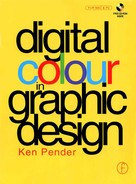Introduction
 ike it or not, we live in an increasingly digital world. Many of my generation can still remember, with some nostalgia, winding up the clockwork mechanism of a post-war radiogram housed in its polished mahogany case, then inserting a fresh needle into the pick-up arm, before placing Eddie Calvert’s 78 rpm bakelite rendering of Oh Mein Papa carefully on the turntable. Who among us then, as we listened to the crackly strains of Eddie’s golden trumpet, could have imagined today’s roller-blading teenager listening. through micro-earphones to Oasis on a CD Walkman clipped to the waistband of their Levi’s, while en route to a cyber cafe for a session surfing the Internet!
ike it or not, we live in an increasingly digital world. Many of my generation can still remember, with some nostalgia, winding up the clockwork mechanism of a post-war radiogram housed in its polished mahogany case, then inserting a fresh needle into the pick-up arm, before placing Eddie Calvert’s 78 rpm bakelite rendering of Oh Mein Papa carefully on the turntable. Who among us then, as we listened to the crackly strains of Eddie’s golden trumpet, could have imagined today’s roller-blading teenager listening. through micro-earphones to Oasis on a CD Walkman clipped to the waistband of their Levi’s, while en route to a cyber cafe for a session surfing the Internet!

From the arrival in the shops of the first clunky digital calculators, the pace at which digital technology has permeated every corner of our society has been astonishing. Hard on the heels of the calculator came the digital watch and then something which had a keyboard, like a typewriter, could plug into a TV set and came complete with plug-in cartridges featuring games like Paddle Ball and Brick in the Wall. From what small acorns do mighty oak trees grow! It is probably not putting it too strongly to say that what seemed then like little more than a novelty gadget signalled the beginning of a new phase in mankind’s evolution – an Information Revolution which would be as far reaching in its social and economic consequences as the Industrial Revolution before it. From industry to the financial markets, from education to the media, from health care to military defence and space travel – the list of areas being fundamentally altered is endless.

The power of today’s desktop computer is already awesome by comparison with the earliest IBM and Apple machines and the pace of development continues unabated. Steady growth of the market for hardware is attracting an increasing number of application developers able to offer ever more sophisticated programs, including CAD, 3D modelling, animation and videoediting which, until only a few years ago, would have required investment in an expensive workstation far beyond the means of the average user.

We live in a highly visual world. Most of what we do is supplemented by graphics and images to help convey meaning. An earlier book by the author – Digital Graphic Design -was conceived as a DIY guide to the rich array of resources now available to the digital designer and to the use of these resources to create a wide range of graphic effects. Over 300 black and white graphics created with the use of leading edge drawing, painting, photoediting and three-dimensional applications were demonstrated and explained in a monochrome environment. Digital Colour in Graphic Design is a DIY guide to the creation of an even wider range of dramatic graphic effects and introduces the additional dimension of colour.

From the earliest origins of graphic design, the importance of colour in the effective communication of a message or an idea – to add emphasis or to clarify complexity – was intuitively recognised. More recently, research has shown that, as well as simply attracting more attention, the correct use of colour leads to higher viewer retention of the graphic message.

The objective of Digital Colour in Graphic Design is to use a suite of complementary applications, both vector and bitmap, to demonstrate the evolving potential of digital design. Part 1 deals with the basic principles underlying the use of colour on the desktop, including colour models and the ways in which devices like scanners, monitors and printers handle colour. System calibration methods are covered, as are the many fascinating colour processing features of the leading desktop drawing, painting and 3D applications. The steps to be taken to ensure that an image created on the screen can be successfully converted to printed copy are also explained. Part 2 then expands on the techniques covered in Digital Graphic Design, showing how the use of colour greatly extends the range of opportunities for the graphic designer. Advanced techniques are explained using a wide range of examples. Any suggestions on how the contents could be further improved would be welcome![]()

ken pender
